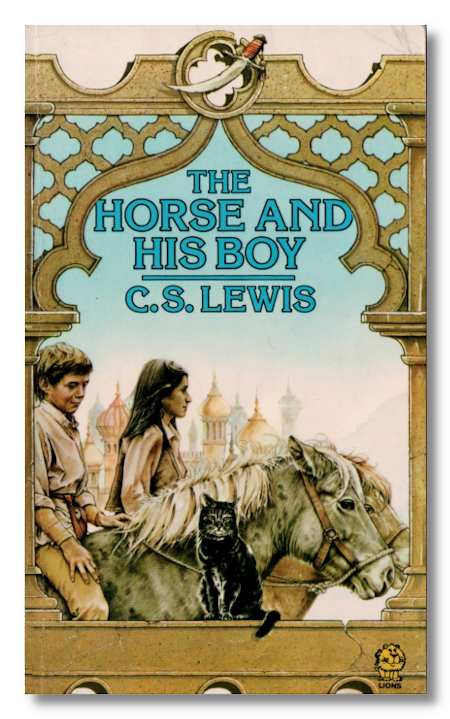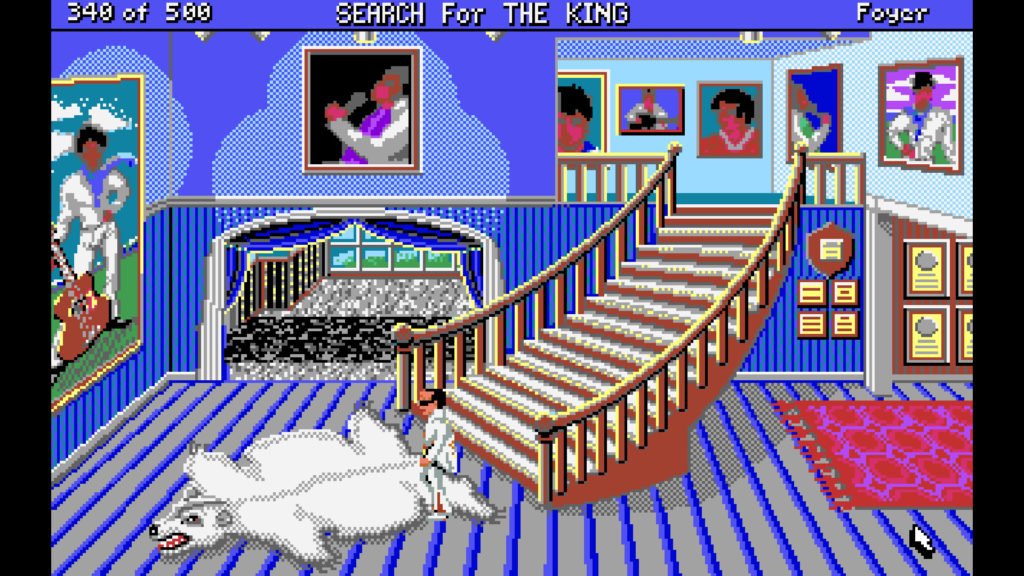November 2021 Wrapup!
With that, No-Effort November draws to a close. I have a schedule I use to plan out my blog posts, to make sure that I don’t double up, or miss a Game Pile or Story Pile article, and that’s been really useful. I do use it to look at the year at a time, and whenever I find I need a time to put an article that doesn’t necessarily have someplace to go – I throw it to a later slot. December is full of of Decemberween posts (more on that tomorrow), which means that in a year, almost every single non-themed post that gets bumped to a ‘later’ spot in the yeargets bumped to November.
What we get as a result is that by the time I get to November, it’s already full – but it’s probably full of stuff that’s not really tied to anything, or is maybe just a list or a ‘hey isn’t this weird?’ kind of post. Basically, November is the corner of the chip packet all of the year’s effort shakes into.
Plus, you know, November is crushed between two pretty cool events and it’s marking season for my teaching, which means the first two weeks of November are super busy for me. Therefore, it’s a perfect time for me to declare it time to do not much.

Story Pile: Narnia, Pt 5 — The Horse And His Boy
Let’s talk about the best Narnia book.
Content Warning: Racism!
Continue Reading →MTG: November’s Custom Cards — Aftermath!
Do y’all like magic cards?
Do y’all like flashback?
Do y’all like wordplay?
Well this month, I made a bunch of aftermath cards.
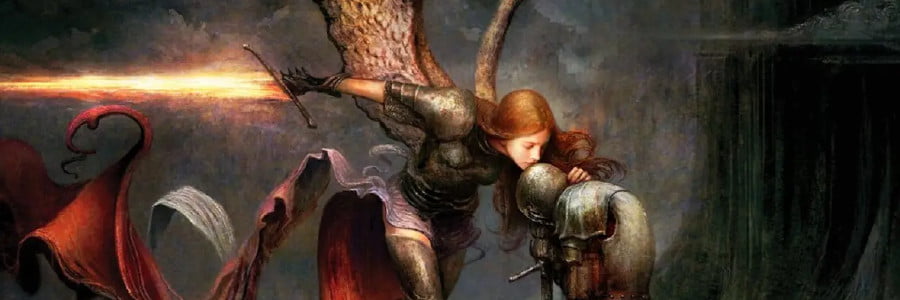
CoX — Abra
Time to time, I write up an explication of characters I’ve played in RPGs or made for my own purpose. This is an exercise in character building and creative writing.
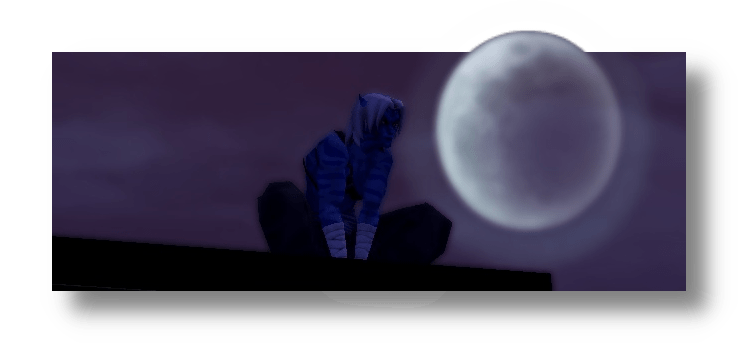
Antimatter Breach Resonance Apeture; a phrase first coined in a 1500 page scientific paper about an organically-integrated chemical engine that could create portals limited to the surface of that organic object.
ABRA: The military research program seeking to develop technology that would allow self-deploying mass-driver weapons, objects that teleported themselves and massively increased in volume upon arrival.
Abra: The boy caught up in the experiments designed to make that research real, with that self-same technology integrated into his body.
Continue Reading →Game Pile: Traveler
Hey, you know that interactive fiction thing? Well, a friend of mine, Caelyn, has made a bunch, and I thought I’d spend some time focusing on experiencing it, with the sort of discipline normally needed for recording it.
If you want to play this beautiful little game, you can check it out here.
T-Shirt: Endless Summer 2021!
It is, here where I am, the last days of spring. Summer is coming, or, really, as an Australian, summer is now. Some people like to imagine seasons as these simple, standardised, three-month chunks, but here in Australia, Summer kinda reaches from sometime in October all the way through to April, if it’s a hot one. Every single day of summer, it seems, shows up with a phenomenal force, a demand that you contend with it.
It’s also the time that my university work isn’t available, creating a strange period where I have something like three months of holidays, a long, slow stretch of time to write, read, create, and yes, of course, contend with the heat.
It’s the first time in my life I really connect with this idea that Americans espouse, of the idea of ‘summer vacation.’ And so I made this shirt, a testament to the way summer feels.

I like to think that sometimes my shirt designs are about jabbing out a simple, short joke, sometimes about using a simple tool well. This one is one I took a lot of time on; multiple iterations through the months, multiple additions of elements. Every element of this design has been made or remade at least twice, because I wanted to make something that looked really good to what I wanted to.
Since it has black shapes in it that rest against the colour of the shirt, there are two designs; one for putting on white shirts:

And one that’s for putting on black or dark shirts.

You can get either design (White or Black) over on Redbubble.
The Caprice of Haruhi Suzumiya
Anime is an art movement that has encapsulated thousands of different competing threads and there’s no true centralising canon because it’s fragmented across all sorts of cultural anchor points. Australians of my age that are into anime so often got started because Aggro’s Cartoon Connection screened Sailor Moon, the ABC screened Astro Boy, Cheez TV screened Teknoman and SBS, in the late 90s, screened Neon Genesis Evangelion, meaning that those four anime are sometimes seen as ‘common ground’ topics. Common ground for one age bracket in one country, and even then, only sometimes.
There are some events that can be looked upon, in the english-speaking anime fandom, though, in terms of their impact on shared cultural spaces, typically conventions, but also just, anime releases that somehow managed to be widespread enough at the right time that they became foundation to the conversation. The big three of Naruto, Bleach and One Piece. Evangelion movies. Fullmetal Alchemist, then Fullmetal Alchemist again. A collection of trans girls and boys and nonbinary people that can trace a lineage from Ranma 1/2 through to Kampfer and Haku and Soul Eater and maybe a few tracing lines to Vandread.
There is a category of people I can annoy enormously by responding to a Touhou picture with which anime is this from?
There’s only so much room for any given series to suck up a lot of the oxygen in the fandom space. You can’t typically have five or six ‘big name’ anime that ‘everyone’ has an opinion on. One of those ‘event’ Anime, that rose, became incredibly prominent, and then deformed the culture at large, becoming one of the rings in the tree trunk that is this strange cultural enclaves, was the enormous franchise known as Haruhi Suzumiya.

There Are No Good Faith Creationists
I thought about doing this as a long-form explainer, breaking down a bunch of creationist claims in a sort of easy, handleable, you-can-do-it-too kind of guide. Then I thought about it, thought about the effort-to-return ratio. Then I remembered that I met Ken Ham and went: Oh. Never fucking mind.
Continue Reading →Story Pile: Narnia, Pt 4 — The Magician’s Nephew
Before there were Pevensies, there was Digory and Polly.
Before there was Narnia, there was the endless forest.
Before there was a White Queen, there was Jadis.
I give prequels a bit of a beating, on principle, which I think is incredibly fair because largely, a prequel is about making the world smaller and more boring. It’s about stepping to a point in a story where we know the conclusion and trying to find stuff in that experience that needs explaining, and is interesting to explain. It’s also often a cynical effort to keep using characters you like in a way that doesn’t require you to confront how they’ve changed by the story that people liked (Man, Obi-Wan Kenobi was such a dickhead and then the prequel series he was in made him so much worse). I am, simply put, not a fan of prequels.
But this prequel rules.
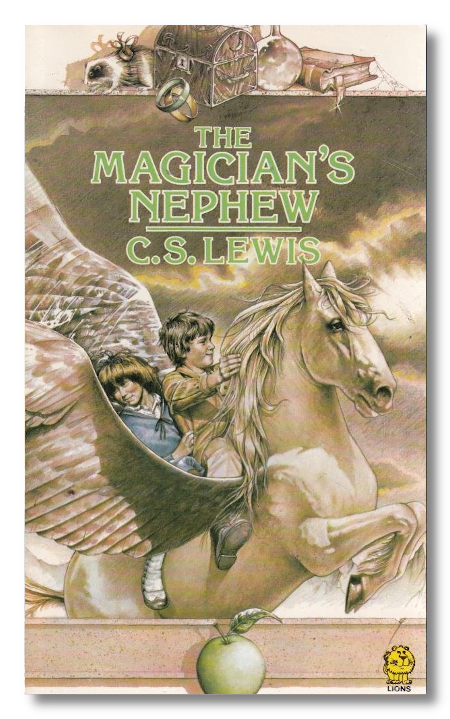
How To Be: Kipo (in 4e D&D)
In How To Be we’re going to look at a variety of characters from Not D&D and conceptualise how you might go about making a version of that character in the form of D&D that matters on this blog, D&D 4th Edition. Our guidelines are as follows:
- This is going to be a brief rundown of ways to make a character that ‘feels’ like the source character
- This isn’t meant to be comprehensive or authoritative but as a creative exercise
- While not every character can work immediately out of the box, the aim is to make sure they have a character ‘feel’ as soon as possible
- The character has to have the ‘feeling’ of the character by at least midway through Heroic
When building characters in 4th Edition it’s worth remembering that there are a lot of different ways to do the same basic thing. This isn’t going to be comprehensive, or even particularly fleshed out, and instead give you some places to start when you want to make something.
Another thing to remember is that 4e characters tend to be more about collected interactions of groups of things – it’s not that you get a build with specific rules about what you have to take, and when, and why, like you’re lockpicking your way through a design in the hopes of getting an overlap eventually. Character building is about packages, not programs, and we’ll talk about some packages and reference them going forwards.
Kipo and the Age of Wonderbeasts is a Netflix TV series created by Radford Sechrist that started its life as a webcomic. The series is something I’ve praised in the past as being uncomplicatedly excellent. Set in a post-apocalyptic far future populated with anthropomorphic animals, it’s a story of a journey of adventure, beset on all sides by a dangerous villain with superpowers who, if he catches our heroes, may destroy their ability to ever defy him. It’s a great adventure structure, and one you should feel free to steal, and central to it all is the character of Kipo, a girl with pink skin whose position in the story is at the intersection of multiple sequences of events, set in motion before she was even born.
And like, I don’t normally do this, but I’m going to put a spoiler warning here. If you read these articles idly, and think you’d like to watch Kipo at some point, you should go do that before reading this article, because I’m going to talk about some stuff Kipo can do that isn’t obvious from the start of the story. I mean, oh okay, shock and horror, Kipo is special, obviously, you know that and I know that just looking at the fact the series is named after her, but nonetheless, I just want you to know, going on, that there be spoilers.
Good?
Good.
Okay, onwards.
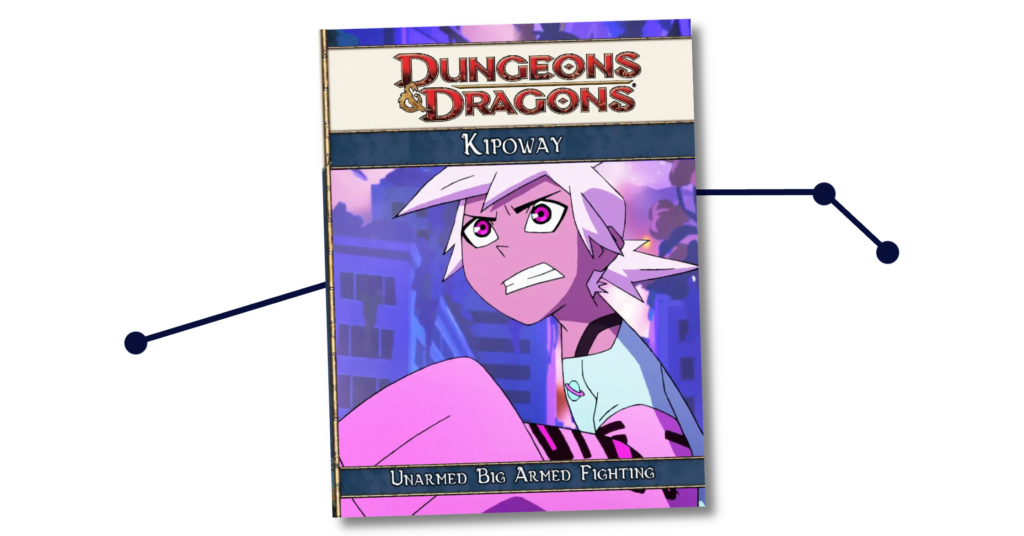
3.5 Memories: Worse Than The Fighter
In Dungeons & Dragons 3.5th Edition, a thing that’s not at all un-awkward to say, there was a set of hardbound expansion books released as a group to satisfy groupings of characters as an archetype. The first set of these, released around 2003, were The Complete Divine, The Complete Arcane and The Complete Warrior, a trio of books that kind of told you what they were about in the name. You had arcane spellcasters, divine spellcasters, and uh, everyone else, I guess.
The Complete Warrior had to bear up as the space for all the classes that weren’t divine spellcasters (but the ranger and paladin can play here too, sure) and all the characters who weren’t arcane spellcasters (but there’s stuff in here for melee spellcasters). Barbarians and Rogues and Monks all got to cram in on this book, but based on the name and the style, and of course, the preponderance of feats in this book, this is the book that’s for fighters.
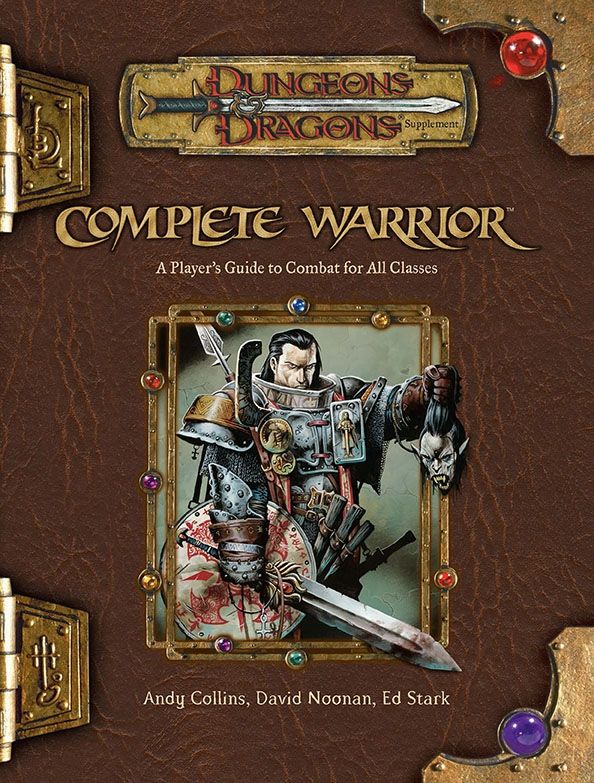
It’s also a pretty cool book, if you’re looking at the good stuff in it that you want to use and make sure people can use. LIke this book has tactical feats, a category of feat that kind of roll together a small number of ‘not enough for a full feat’ advantages into a single grouping, and that’s a really good way to expand expertise on fighters. Prestige classes in this book include the Actually Good Frenzied Berserker, the kinda decent Tattooed Monk, the sorta-maybe-why-not War Chanter, the busted as hell Warshaper and that’s four classes worth having access to in most campaigns. The excellent Combat Brute tactical feat is in here, and uh
Anyway, the point is this book is one of the books I think of pretty positively.
It’s also a book that features the rare examples of a class actively worse than the Fighter.
The ‘Samurai.’
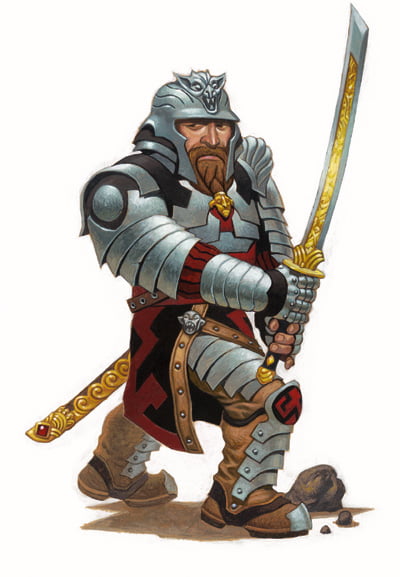
Game Pile: Before There Were Stars
Oh hey I already have this pic uploaded, sweet.
It’s 2021 November, and I have finally followed up on a promise from a game I bought in January, 2019.
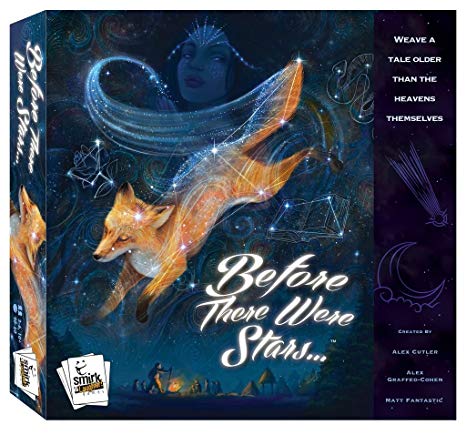
Structural Boundaries On Making
The medium is the message. The structures of things are more powerful than the things themselves for changing the world. There are constraints on things that are about the way they are delivered and deployed that defy the mere conventions of pure aesthetics. We talk about what media does but so often that is a question fighting with what media can’t do — because of resources like time or affordances like culture.
I’m gunna talk about making and selling Invincible Ink games.

Welsh Rarebit
Content warning: Food!
Continue Reading →Nicolascagember
I don’t know if you’ve noticed, but all the Story Piles in September were about Nicolas Cage movies.

Story Pile: Narnia, Pt 3 — The Last Battle
With the core books that detail what we will gently refer to as the plot of the Narnia universe already laid out, a steady ramp upwards from dull to decent, it seems only fitting now to discuss the way that the series became actively traumatising.
For those not familiar, The Last Battle, the seventh book and last chronologically, is the next book in a series of honestly fairly inoffensive storybook fantasy stories. These stories have followed the lives of a handful of children, so far; The Pevensies, Lucy, Peter, Backup Peter, and that whore, and Eustace Scrubb and his unassumingly decent friend Jill Pole. There’s also another pair, Digory and Polly, and you’ll be left going ‘wait who?’ because they don’t show up until you read the last (first) book, but I’ve said too much.
Point is, if you were like me, you were reading these adventure stories that teased at the ideas of spaces of Narnia, of cultures and nations and magical powers and interesting questions, and each time you got a new book, you learned something new and had more of this beautiful country spread out before you. So often these stories would reward you not with some great accomplishment or demonstration of physical power, some great or heroic badass fight, but instead a bucolic, Hobbit-style scenario of going home and putting things in a tidy position. This was a world where great travails and missing heirs happened, but where the grand battles were often narrated over rather than experienced, and a late book narrative could divert into a conversation about how much centaurs liked porridge (a lot).
The narrative payout of Narnia was always dialled in to ‘oh, well, that’s alright then.’
This book, which you may as a child have picked up and read with the unassuming idea of oh, I like these, this is another one, I wonder which new human friend will learn about Narnia, kills literally everyone you know and destroys Narnia down to the very base foundations of the whole world, leaving behind nothing but a vast expanse of soulless, empty ice.
Then it tries to act like it’s a happy ending.
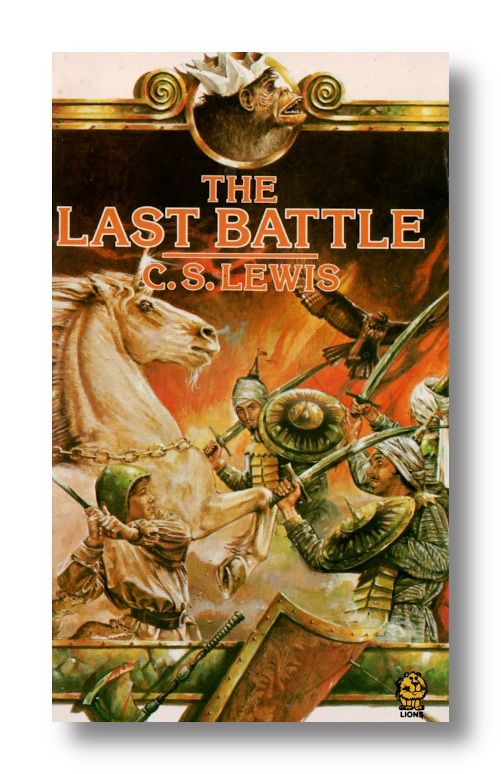
I Hate My Laugh
The Silent Bin Night
Look it’s late, I’m up, I can’t sleep because I made a stupid mistake of listening to the Cat Empire song Miserere too close to bedtime, don’t fucking at me.
But.
It is also bin night.
For those not familiar, here in Australia, we have weekly and biweekly pickup of our garbage, which we keep outside the house in bins that have wheels on them for easy arrangement at the kerbside. The garbage trucks typically come by a reasonably early hour in the morning, which means if you want to make sure your trash is collected, you get it out on the kerb the night before.
I live in a block of houses that share a driveway, and that has certain rules. One of them is to keep the noise down after a certain time of night.
Now.
This is a problem.
The problem isn’t the requirement, it’s very reasonable. The problem is that this semester, that bin night has fallen on my latest work day. So I will get my work done, finish work, make dinner, then clean up after dinner and recover and have a little breather and oh woops it’s after the time to make noise. And that can be a problem if you’re trying to put things into the bin.
For kitchen waste, with soft garbage that goes into a plastic bag, then that plastic bag goes into the garbage bin, it’s easy. Just lower it in. But for recycling it’s a lot trickier, with a recycling bin that is both larger to encourage its use. It being larger means that it’s harder to put things in it and have them reach the bottom and they make a big echoey noise as things land in it. Plus, recycling is the bulk of our waste, so we want to make sure we don’t miss a recycling night (they’re biweekly instead of weekly).
Tonight, I didn’t put the bins out on time.
What followed is that when I realised the problem, I had two options. One, I give up, accept that it was going to be a rough week without room in the recycling bin, or I find a way to do it quietly. And like a big idiot, I did exactly that.
This involved carrying the bins – which are wheeled – a few steps at a time – to a location away from the houses, so that they didn’t make noise as I wheeled them over the driveway work. This also involved then walking all the recycling I have out that far as well, to place it in the bin, out by the street. This was also done at night, in the cold and quiet, while holding my breath to make sure I didn’t make excessive noise.
There’s no spoiler or important point here, I just thought ‘oh, hey, that would work, wouldn’t it?’ and then I tried it and it worked? And that’s kind of okay?
Game Pile: A Short Hike
I don’t feel like I have a lot to say about A Short Hike in and of itself. It’s a lovely charming little game. I don’t know if there’s some clever mystery at the end of it, or some twist in how the game works, because as I post this, I’ve only played a little bit of it. Like, oh, say, forty minutes.
I think it’s a pretty sweet little game. I like its style, I like how it feels. It’s a cosy game, and I’m just not very well-acquainted with cosiness. But while I played this game, I talked a little bit about game design, about courage in choices, and about workloads and my own history with games.
A Big List Of Some Things To think About When Recommending A Game
I think about player limitations. I think about them a lot when I’m designing a game — if there’s something that makes it hard for players to deal with the game, and it costs me nothing to make the game approachable at the outset, then that’s an easy way to make sure more people can play my games. Also there’s a capitalist incentive, yada yada yada, but let’s face it, I don’t make games for the money.
I make games for the prestige.
Hahaha, me neither.
Anyway, I have a list of things I think about and check back on when I’m making games that plays into how I talk to people about my games when I’m selling them face to face. This is useful to think about when you think about ways to recommend games to other people. It’s important to consider the things on this list as a simple ‘yes/no’ not ‘good/bad’ paradigm. People want games that are good for them. While this list won’t make games perfect for anyone, being able to answer the question ‘Did I think about this?’ is important.
Typically, you’re going to see recommendations for games that can benefit from these considerations. The good news is, as you think about these things, you’ll be more likely to think about things games give people and how they relate to them. This isn’t exhaustive, either!
Continue Reading →Mostly Full
I haven’t written anything in the past few days.
This is a lie.
I haven’t, in the past few days, moved many things from the drafts folder of this blog’s content management system (CMS) to the scheduled folder. That means there’s a number that goes down every night that hasn’t gone up. It has failed to maintain stasis. I have been good this year about scheduling ahead and making sure that every day, another chunk of writing gets done.
I’ve watched a bunch of Brandon Sanderson lectures on writing sci-fi and fantasy lately. He talks about writing in terms of hours? I find that interesting, because my work isn’t currently very contained. If a student contacts me at any given moment, it seems easy and free to just respond immediately, but this means that I’m functionally on call 24/7. For me, I instead have a simpler rule: I write a thing every day.
It doesn’t have to be big or small, it just has to be something that seizes me about the blog. Something I want to talk about, something I feel I have the pull or energy to. If I don’t have that energy, I instead spend time going through my calendar that I use to organise the blog, and put down notes of things to write later, or ideas I may want to follow up on.
This year, the articles have been big. They’re an average of about a thousand words, and that means any modestly short article, like a 500 word article, is being tipped out by a twelve hundreder.
But I didn’t write anything in the past few days.
I did record video, video that should be going up soon. It had Fox involved.
I recorded a stack of micropodcasts for Patreon, which should be going up soon.
I wrote part of four different articles that aren’t going up, and I don’t know when they will go up.
Right now I am writing this, because this is what seizes me. The strange feeling of knowing that I have written, and wanting to say I haven’t done nothing, even though nobody is saying I do nothing. Wanting to push that number from going too low, like I have a broom in my hand and I can keep back the tide with it.
I really like having this blog to structure things, and part of keeping it from controlling me – because hey, did you know for me it’s marking season right now? – is being willing to use some days to phone it the fuck in.
The funny thing about this post is that I wrote it… like a month ago. But here I am, actually today, on November the 9th, working on updating, and adding to this post, because I also have not done much writing this month. And that, though, that I expected, that I in fact planned for. Because the funny thing is, I know that late October and early November is the marking period, and this year the marking has been even moreso.
Odds are good if you know me, you may think ‘are you still marking?’ because the past like, three weeks have been ‘sorry, I’m busy.’ And that’s true.
But this is what the backlog is for, too. It’s for accounting for the times when I literally won’t be able to write, and need to make sure I have a plan for that.
Kobolds As Convergent Design
I’ve spoken about the role of the Goblin on Cobrin’Seil, but what about the kobold? I did bring up the question of hey why are these two so alike? And the followup question of where do they come from? The answer to both is ‘authors are weird,’ but I’m looking at it more in terms of how I can build and shape the world I’m putting players into, and I want the kobolds there to be both interesting enough as a player option without depriving people of the opportunity to use easy content where kobolds are happy to try and stick spears in players.
I am a fan of thinking about cultures in terms of their places in the world. That often requires answering the question ‘why are they here?’
Why then, are kobolds here?
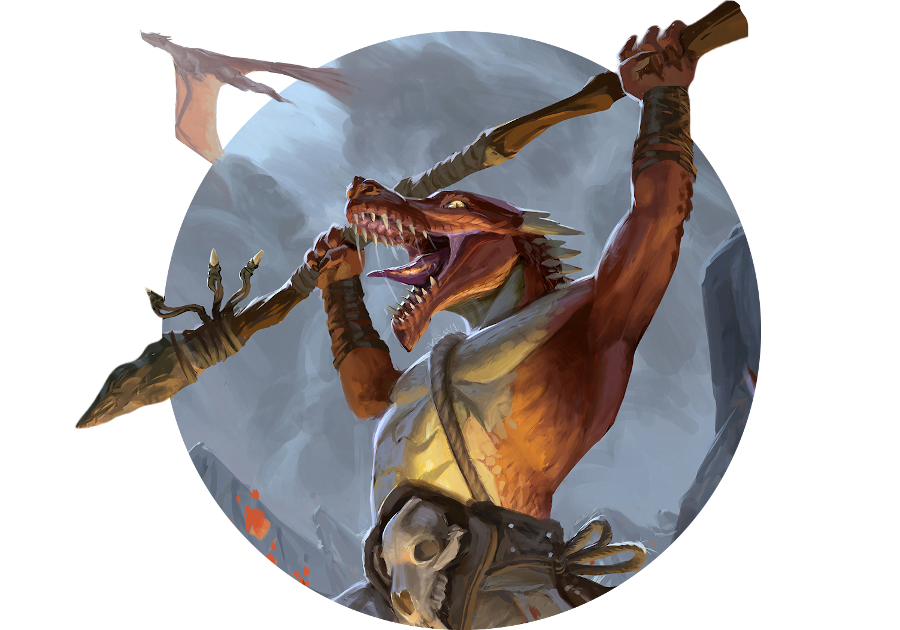
Story Pile: Narnia, Pt 2 — The Eustaciad
Last week I wrote about the fantastically dull, chorishly written, monarchist crap that was the genesis of the Narnia series, where a twee fairy tale about how great it was to be a divinely ordained king and disposing of foreigners who weren’t adequately Christian. I lumped these stories together as ‘the Pevensiad’ because they were the stories primarily focused on the character of the Pevensies, four ‘characters’ deviating primarily from a mean of dishwater by dint of how they didn’t live up to the moral and ethical standards of that dishwater.
The start of Narnia was very much about Lewis talking it seemed to his vision of a specific kind of child who he wanted to give a good example of christian childhood behaviour, while offering them what we can modestly call ‘adventure,’ but it was in these books that the conventional isekai narrative of Narnia actually hit its stride and seemingly had some ideas. This is expressed in how the story introduced a character who actually had the room to develop and do something interesting, in the form of the best earth-native Son Of Man character in the entire series, the one, the only, Eustace Clarence Scrubb.
That is literally his name.
And he almost deserved it.
I’m not joking.
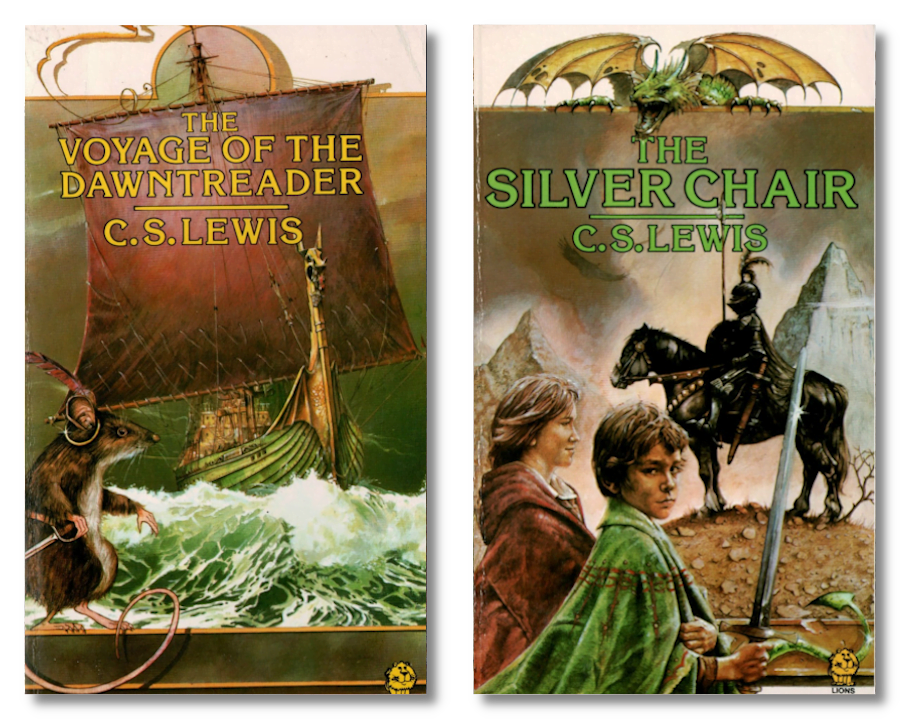
The Goblin As Fracturing Culture
I’ve spent some time considering the role of goblins and kobolds in D&D worlds, but stopped short of making decisions as they pertain to my own setting of Cobrin’Seil. It’s interesting that the idea of dispensing with both cultures was never really on the table, and I think part of that is because they do serve such a rudimentary purpose that dropping them wastes a lot of pre-existing material. It’s not like ignoring Duergar with their awful name, which drops maybe five instances of useful monster design across all editions; goblins are used in a lot of spaces and just the presence of them is a useful, handy thing for a lot of encounter designs. If you need a low-level threat, goblins are great.
What I want to do is address what they are. It’s not enough to just go ‘they’re a monster race,’ because that… doesn’t make any sense at all when you look at Cobrin’Seil and its approach to the world. I jettisoned the dwarves entirely because they don’t do anything (did I ever write about that?), so what are goblins as a culture.
Continue Reading →Game Prototyping: 9-4-3-2
Okay, let’s talk about this idea.
You are hiding your One card. Fortunately, you have eight other cards, and you have arranged a line to defend them. They’re all more powerful than your One, each one counting up from Two all the way to the immense Nine. You can’t hold all the cards, though, so you have to get rid of one card, chosen at random (not your One, don’t worry about it). You put a card in reserve. This is a card you’ll be able to quickly deploy later. Then you pick of your remaining seven cards, four cards to put down in a defensive line in front of you.
And now, you can use a face down card to attack an enemy’s card. But cards can attack the cards on the table, or sometimes cards in the hand or sometimes even attacking the card in reserve. Sometimes there’s cards that care about the burned card under the reserve. You have nine cards, and they all do different things, and you’re trying to find a way that your cards can find my One without presenting vulnerabilities to my cards, and I’m trying to do the same.
It’s got a spatial element. If a card is destroyed in your line, it can be reinforced from the reserve, or your hand. If it’s not, enemies can move into that space and suddenly that card can attack your hand directly. Combat is simple – you reveal the cards, and the higher number wins, the lower number is destroyed and ditched. There are ways to return the ditched cards to your hand, too, so you can even resupply!
The game is eighteen cards in total. Cards have their own abilities, and the game has room to put a lot of cool art on these cards.
Now I have a problem: What fiction am I going to put on this game?
Continue Reading →Game Pile: Les Manley In: Search For The King
Being as it is No-Effort November and I am already penning this after having brushed my teeth and let my last fuck for the day wend its way off into the yonder, my plan was to talk for roughly five hundred words and with zero meaningful insight about the 1990 narrative adventure game Les Manley in: Search For The King.
A tepid little entry into the ‘maybe I’ll get to see boobs’ genre of adventure games pioneered by such titles as the Leisure Suit Larry and Spellcasting franchises, rather than coming from the duelling giants of Sierra and Lucasarts, or their peripheral competitors, this game was made by Accolade. Now, there’s some novel history here, where the guy who made the game was Steve Cartwright, who you may recognise if you’re a huge Atari 2600 nerd, and also is responsible for making Diner Dash, yes, that Diner Dash, no, it doesn’t mean anything to me either.
Continue Reading →Making The Sonic The Hedgehog Video
This was a task.
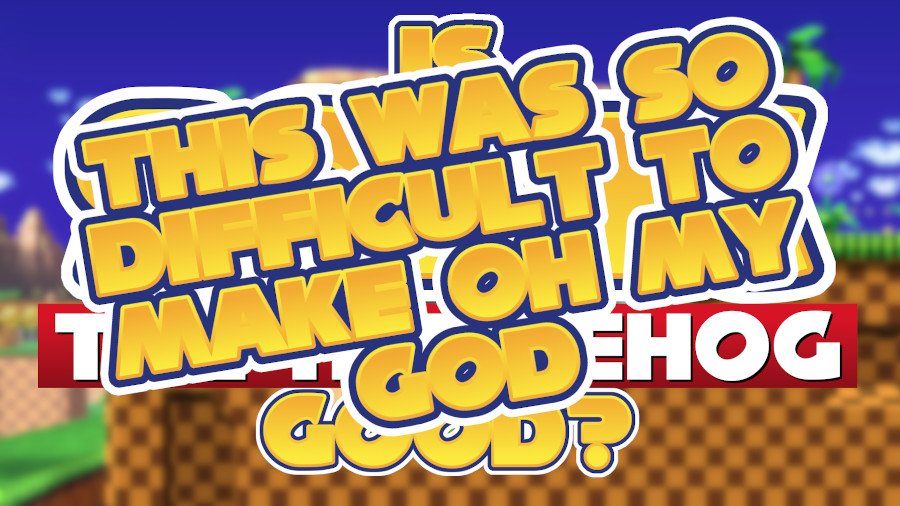
Last month, in September, a video article of mine went up, and it was great and I’m very proud of it and it was a lot of work to make. It was about the Sonic the Hedgehog games and whether or not ‘Sonic The Hedgehog is good.’ This is a dumb question, but I was able to use it as a launching point to explain a bunch of different research methods and why you might use a particular tool and how to make it work.
And I want to account for how it got made.
Continue Reading →Isekaidon’tknow
The Isekai genre is an immense, sprawling forest of trees, each with twisted and interconnected roots. Vast and towering trunks loom high above, stretching off and up into a dreaming dark, leaving us to step between them, and peer down into the pools of collected water between them.
Continue Reading →Announcing: The Disney Animated Canonball, Season Three!
Remember that time Fox and I started a podcast where we watch all of the Disney Animated Canon? You don’t? Oh great, do I have a prize for you!
See, Fox and I have watched all of the Disney Animated Canon, by volume. But we recorded our reactions and opinions on each, resulting in three (three!) seasons of a podcast where we talk one-by-one about each movie, putting it into context, with a conversation about what it’s like to be a long-term fan of these movies, and comments about missing things because you grew up in a cult.
This is Season 3, which drops with eight full episodes, just under ten hours of content, give or take twelve minutes, and covers the movies from The Aristocats to Oliver & Company. We begin as we end: With deeply mediocre cats.
You can get the podcast on Spotify, Apple Podcasts, Pocket Casts, and any other good podcasting service that’s checking the standard RSS feeds? And failing that, you can head to the website.
Story Pile: Narnia, Pt 1 — The Pevensiad
There are seven books in the Narnia series of books, created by one C S Lewis. The books have a narrative order and a publication order, and they have a clear distinct arc from the beginning and creation of the world of Narnia and the eventual end of that world. They are profoundly Anglican stories, focusing on an alternate world, one of many, alongside our own, which is meant to have many of the same constants as ours.
Like our God and his incarnation, Jesus.
In this, he’s a lion, named Aslan, who is also sometimes God. Like I said, it’s very Anglican.
Odds are good that you haven’t thought much about Narnia much at all, as an adult. They’re works that have a lot of cultural presence and their metaphors and references work as sort of background radiation for my generation, especially thanks to them being widely distributed public library style books which even got TV Adaptations and big-name Disney movies (remember those).
They’re fantastically twee books, children’s books from a particular era of storytelling that kind of … don’t… like… children?
When you view the books series as a whole, I see five basic groupings in the story, starting with The Lion, The Witch, and the Wardrobe, and the book that follows directly upon the end of that one, we have the first predominant chunk, The Pevensiad.
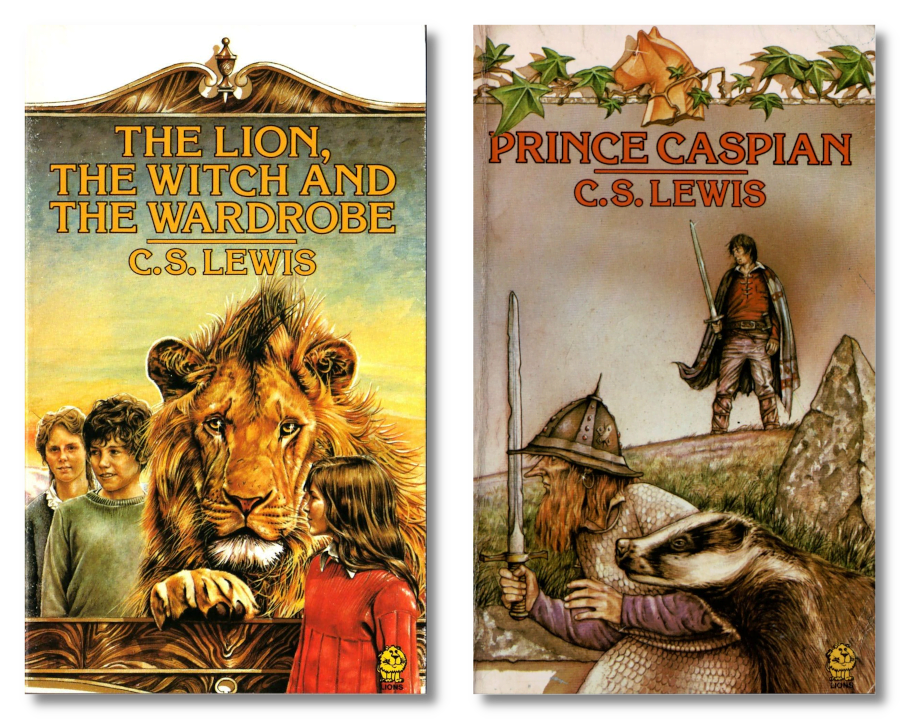
October 2021 Wrapup!
Another dread month draws to a close! Dense with content, rich and redolent with big spooks, and now let’s give you a guide to blog articles you may have missed this month that I recommend you check out.

